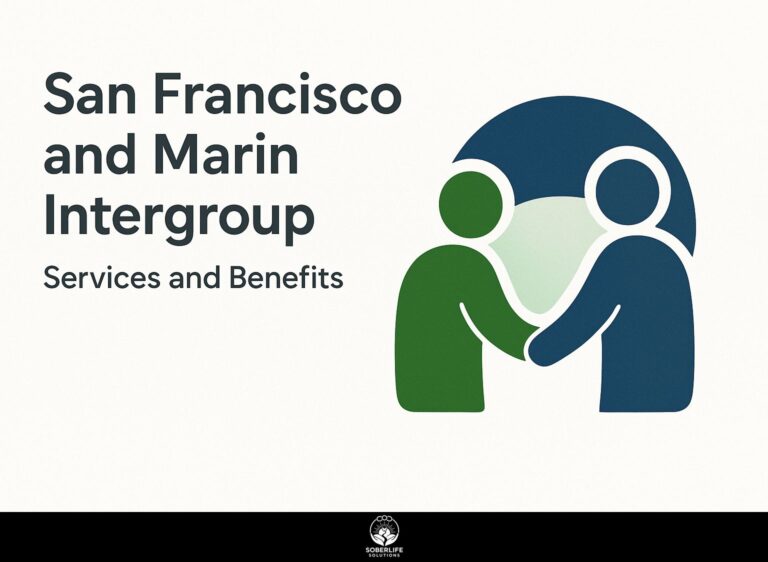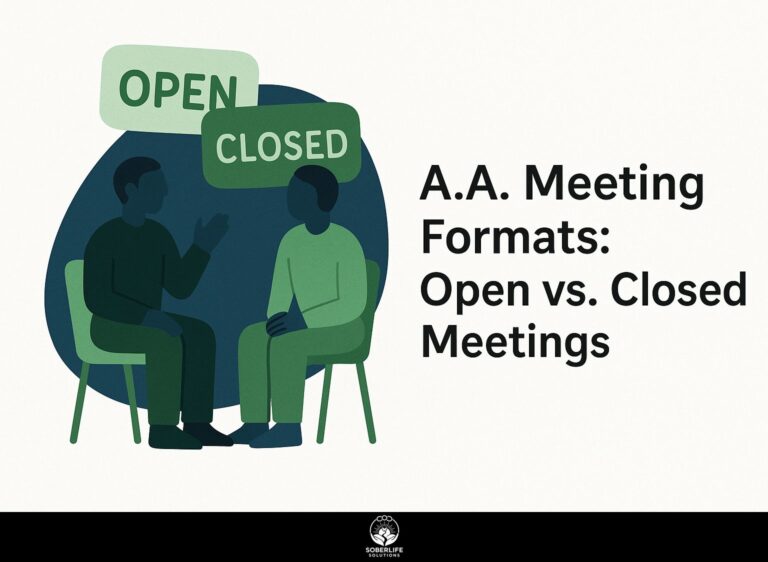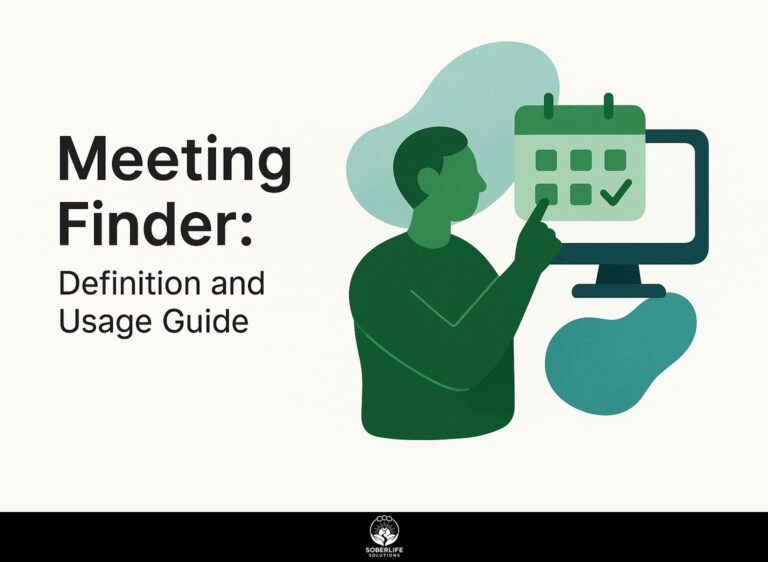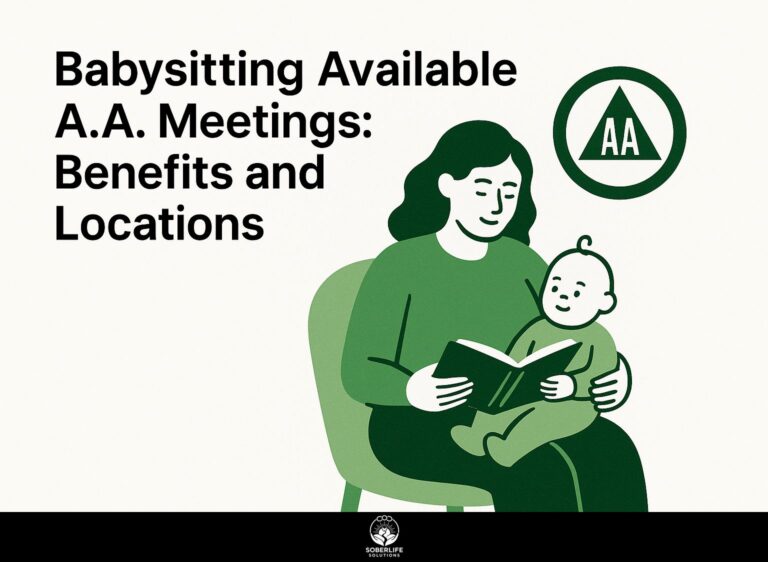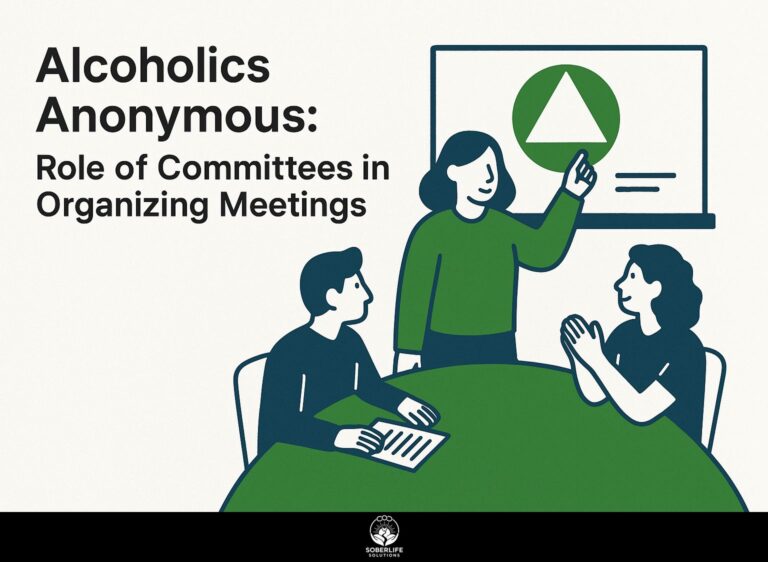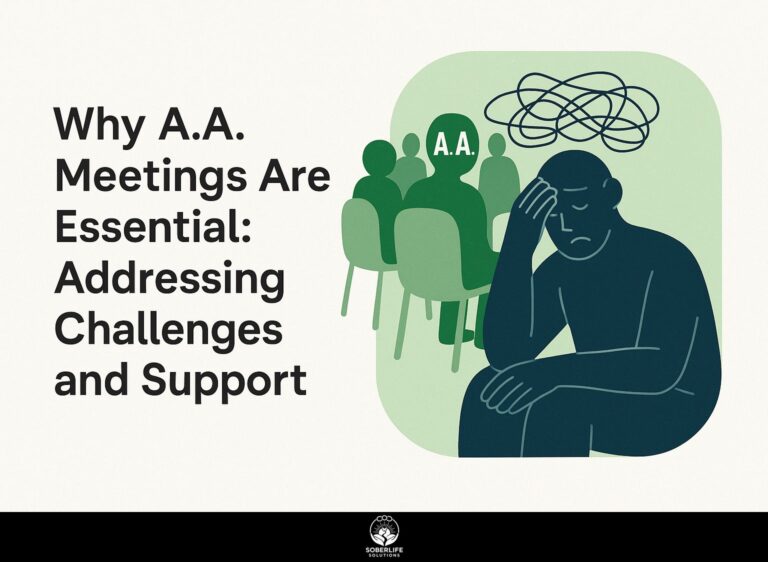Mask Protocols in A.A. Meetings: Requirements and Recommendations
As Alcoholics Anonymous (A.A.) starts holding in-person meetings again in Rhode Island, it is important to follow proper mask rules. With health concerns being a top priority, groups need to find a way to keep members safe while respecting each other’s choices. This article discusses the necessary guidelines and suggestions for wearing masks during A.A. meetings, helping to create a safe space for recovery as we continue to face issues related to COVID-19.
Key Takeaways:
- Mask protocols are essential for ensuring safety in A.A. meetings, aligning with local health regulations to protect participants.
- A.A. groups should suggest particular kinds of masks and set clear guidelines for how to wear them to improve comfort and involvement for members.
- Consider virtual or hybrid meeting formats to maintain community connections while adhering to safety protocols amidst changing guidelines.
Importance of Safety in A.A. Meetings
Safety protocols help A.A. meetings continue offering support while reducing health risks, promoting a feeling of community safety and personal responsibility.
Putting in place strong safety rules is important for keeping A.A. meetings safe. For example, maintaining space between people and wearing masks can lower the chances of spreading illness during these events. According to research published in Frontiers in Psychology, psychological safety plays a crucial role in maintaining group dynamics, which can be relevant for A.A. meetings as they strive to foster a supportive atmosphere. For those interested in adapting these strategies to a virtual format, it’s valuable to consult guidelines on [online A.A. safety](https://soberlifesolutions.com/online-aa-safety-guidelines/) that can enhance participation while ensuring members’ well-being.
Utilizing online platforms like Zoom allows members to participate without in-person attendance, thus enhancing accessibility. It’s also important to develop a clear communication plan for sharing updates about health guidelines with members.
By focusing on these protocols, groups protect each member and strengthen their shared commitment to recovery while maintaining health.
Overview of Current Guidelines
Current health guidelines from the CDC recommend wearing masks indoors in public spaces, particularly in areas of substantial COVID-19 transmission, to protect all attendees.
Various states may have their own specific requirements for A.A. meetings. For instance, California mandates that all participants wear masks regardless of vaccination status indoors, while Texas has lifted most restrictions but advises masks in crowded indoor settings.
Review the local health department rules before meetings. Watch for any symptoms or exposure risks in attendees to help keep everyone safe, as noted by the CDC, which emphasizes monitoring local infection rates and adherence to public health guidelines to ensure community safety. To ensure you’re following the best practices while meeting, consider checking out our tips for attending A.A. meetings safely.
Tools like the CDC’s COVID Tracker can help you monitor local infection rates, which can guide your choices.
Requirements for Mask Use
Wearing masks according to local health guidelines is essential for ensuring everyone’s safety during in-person A.A. meetings. This is supported by recommendations from the Centers for Disease Control and Prevention (CDC), which highlights the importance of mask usage in preventing the spread of respiratory viruses.
Local Health Regulations
Local health regulations dictate mask use, with many regions requiring masks indoors regardless of vaccination status to curb COVID-19 spread.
For example, California mandates masks for all indoor public spaces, which extends to Alcoholics Anonymous (A.A.) meetings in community centers.
In contrast, Texas has lifted many mask requirements, although some counties still recommend masks for gatherings.
New York requires masks on public transport and in some places, which affects how A.A. meetings are held.
Group leaders must know the local rules and make sure everyone follows them to keep the participants safe.
Types of Masks Recommended
Health officials suggest wearing high-quality masks like N95 or surgical masks to improve safety during A.A. meetings.
N95 masks fit tightly and block airborne particles, making them ideal for crowded areas. Surgical masks fit more loosely but still offer effective protection.
Provide cloth masks as a comfortable choice for those who want them. To improve safety, make sure hand sanitizer is easily accessible at the meeting location, and remind participants to clean their hands often.
Following these steps can create a safer environment, allowing everyone to focus on their recovery without interruptions.
Recommendations for A.A. Groups
A.A. groups can improve member safety by using proper mask-wearing and clear communication during meetings. To enhance safety even further, you might consider reading about our how to attend A.A. meetings safely: tips and guidelines.
Best Practices for Mask Wearing
Best practices for mask-wearing include ensuring that all attendees wear masks properly and providing extra masks for those who may forget.
To maximize safety, choose masks that fit snugly over the nose and mouth without gaps. Encourage attendees to wash or sanitize their hands before putting on and after removing their masks.
Establish a guideline for changing masks when they become wet or dirty-ideally every four hours or whenever they appear unclean. Also, talk as a group about how to use masks, ensuring everyone knows the rules, like wearing masks while speaking or passing items during the meeting.
This motivates everyone to be accountable for their health and safety.
Communication with Members
Clear communication with members about health rules is essential for building a safe and compliant environment in A.A. groups.
To make sure all members know the updated health guidelines, use a variety of methods.
- Regular emails can serve as primary updates, highlighting key changes and any relevant safety tips.
- Distribute flyers during meetings for those who prefer tangible information.
- Utilizing virtual platforms, such as Zoom or social media groups, can help reach members who may not attend in person.
Create clear ways for people to share their thoughts. Encourage group talks to improve communication and make sure everyone feels part of the conversation and heard.
Impact on Meeting Dynamics
The use of mask rules greatly influences how A.A. meetings operate, impacting how comfortable members feel and their willingness to participate.
Member Comfort and Participation
Ensuring that members feel safe and at ease can lead to more people attending A.A. meetings during the pandemic.
Facilitators can create a welcoming atmosphere by implementing a few thoughtful strategies.
Tell everyone the safety rules, like wearing masks and staying apart, ahead of time. Arrange chairs to provide enough space between guests for comfort and safety. Welcome attendees warmly when they arrive to help them feel at ease and included.
Encourage members to share their thoughts on the guidelines to promote open discussion. Think about providing online options for those who do not want to join in person, ensuring everyone can get the support they need.
Addressing Resistance to Mask Use
We need to address concerns about wearing masks from members to create a safe and welcoming environment during in-person meetings.
To effectively tackle this resistance, start by engaging in open discussions about health concerns, allowing members to share their feelings and opinions.
It is essential for everyone to unite in order to stay healthy, and we should all wear masks.
Share examples of success, like a community group that built a safe space by establishing clear rules and treating each other with respect, where everyone chose together to wear masks.
Using clear methods like visual signals and team agreements can help build a friendlier approach to promote compliance.
Alternatives to In-Person Meetings
As in-person meetings face difficulties because of health guidelines, many A.A. groups are looking into online and mixed meeting options to stay connected.
Virtual Meeting Options
Using platforms like Zoom for virtual meetings allows A.A. groups to continue their sessions while adhering to health guidelines.
To get more people involved in online meetings, consider using tools like Mentimeter for live polls or Padlet for shared notes.
Establish clear technology requirements, such as a stable internet connection and user-friendly equipment (microphone, webcam).
Start with icebreakers to warm up participants and encourage openness; for instance, asking each member to share a personal goal can set the tone.
Effective online meetings often use breakout rooms for smaller discussions, creating a friendly atmosphere and encouraging different people to join in.
Hybrid Meeting Formats
Hybrid meetings that include both in-person and online participants are increasingly popular, allowing everyone to take part.
To create a successful hybrid meeting, begin by selecting suitable technology. Make sure your meeting area has good cameras and microphones; the Logitech Rally for video and Blue Yeti for audio can improve the overall experience.
Use platforms such as Zoom or Microsoft Teams to facilitate virtual participation, ensuring they support screen sharing and chat functionalities.
Establish communication norms by encouraging all participants to engage actively, perhaps through designated moments for questions. Prioritize safety by adhering to local health guidelines, ensuring adequate spacing and sanitization for attendees in the meeting room.
Adapting to Changing Guidelines
A.A. groups need to be flexible and quick to respond to new health guidelines to make sure they follow the rules and keep members comfortable.
To stay informed, A.A. groups should prioritize regular communication with local health departments, subscribing to newsletters and alerts that provide updates on relevant health mandates.
Hosting community outreach events can also create an open dialogue, encouraging members to voice concerns or suggestions.
Choose someone in the group to gather feedback and share information quickly. Using online tools or social media can help give timely updates, ensuring everyone stays connected and informed during these changes.
Long-Term Strategies for Safety
Creating lasting safety plans will help A.A. groups keep offering important support while focusing on health and well-being.
Regular health assessments are important; plan to have annual health check-ups for members to support their overall well-being.
Ongoing education can be facilitated through workshops that cover topics like mental health awareness and substance abuse prevention.
Creating a sense of unity and responsibility is important. Invite everyone to share their own experiences with health and safety to build stronger support in the group.
Choose a safety officer for each group to manage these tasks and make sure safety rules are followed, helping to create a safe and friendly environment for everyone.
Frequently Asked Questions
What are the Mask Protocols in A.A. Meetings: Requirements and Recommendations?
The Mask Protocols in A.A. Meetings: Requirements and Recommendations are the rules set to keep participants safe and healthy during in-person gatherings. These rules usually involve wearing masks, keeping a safe distance from others, and following local health guidelines to reduce the chance of spreading illnesses, especially during the COVID-19 pandemic.
Why are Mask Protocols in A.A. Meetings: Requirements and Recommendations important?
The Mask Protocols in A.A. Meetings: Requirements and Recommendations are important to protect the health of all attendees. They help prevent the transmission of respiratory viruses and create a safer environment where individuals can share their experiences and support each other without the added concern of health risks.
Are there specific types of masks recommended in the Mask Protocols in A.A. Meetings: Requirements and Recommendations?
How can A.A. meetings enforce the Mask Protocols in A.A. Meetings: Requirements and Recommendations?
A.A. meetings can enforce the Mask Protocols in A.A. Meetings: Requirements and Recommendations by clearly communicating the requirements prior to the meeting, providing masks for those who do not have one, and designating meeting leaders or volunteers to remind participants about the protocols during the meeting.
What should I do if I cannot wear a mask due to health reasons in accordance with the Mask Protocols in A.A. Meetings: Requirements and Recommendations?
If you cannot wear a mask due to health reasons, it is recommended to inform the meeting organizers in advance. They may provide alternative options such as virtual attendance or designated seating arrangements that allow you to participate while adhering to safety guidelines as outlined in the Mask Protocols in A.A. Meetings: Requirements and Recommendations.

